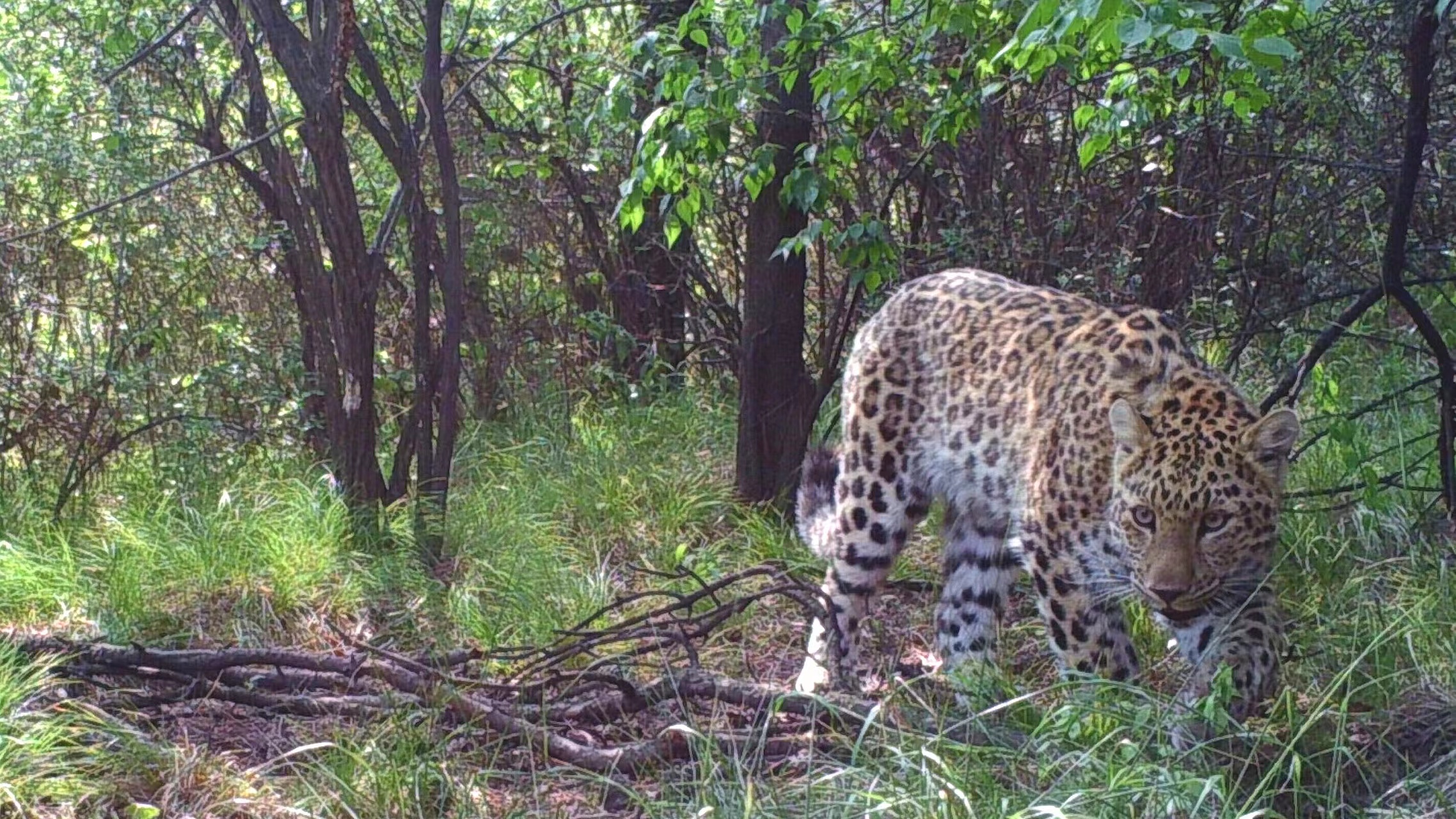
F2, the second female leopard identified by the CFCA, in a forest in Heshun County, Jinzhong City, north China's Shanxi Province, July 2015. /CFCA
F2, the second female leopard identified by the CFCA, in a forest in Heshun County, Jinzhong City, north China's Shanxi Province, July 2015. /CFCA
Song Dazhao still remembers the thrill when he and his colleagues spotted F2 again this spring. "F2" refers to the second female leopard that was captured by their infrared cameras in north China's Shanxi Province.
"She escaped our cameras for almost six months last year, and we thought she died as our cameras cover a large part of leopards' habitats in Shanxi," said Song, a wildlife enthusiast who founded the China Felid Conservation Alliance (CFCA) in 2013, an organization focused on protecting China's wild cats.
"We've watched her grow from a very young age since 2015. She has a litter of cubs almost every two years," Song recalled.
F2 caught Song's attention because her territory lies outside two neighboring nature reserves, where her life has been disturbed by urban development and poaching.
"We have been worried about her," said Song. "It was such a pleasant surprise to see her show up again."
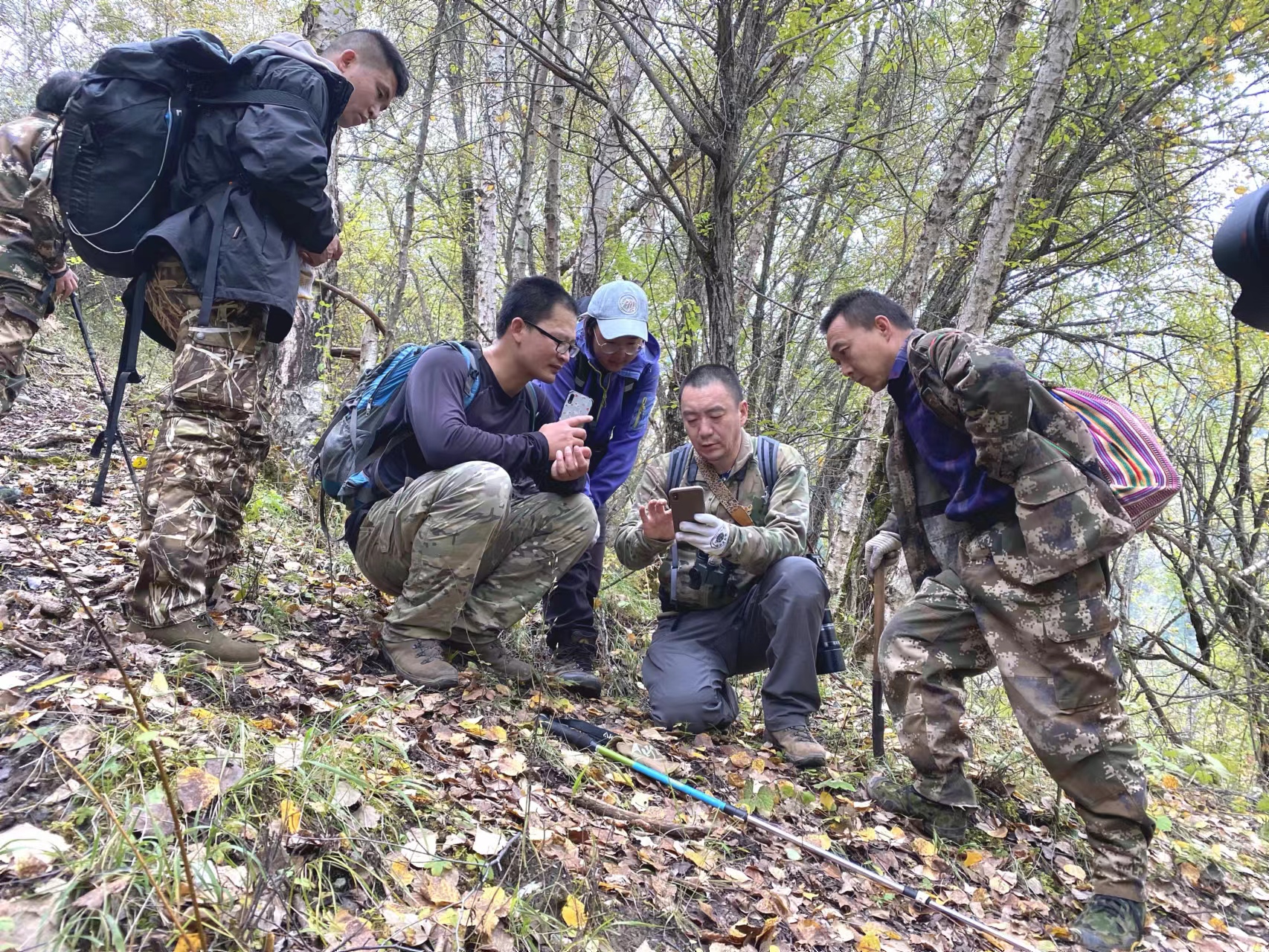
Song Dazhao (2nd R) and his teammates work in Axia Nature Reserve of northwest China's Gansu Province, October 2020. /CFCA
Song Dazhao (2nd R) and his teammates work in Axia Nature Reserve of northwest China's Gansu Province, October 2020. /CFCA
An ambitious program
Over the past decade, Song and his CFCA teammates have identified nearly 100 adult leopards in Shanxi at the middle section of Taihang Mountains, a major habitat of North China leopard.
The spotted animal could be as long as two meters. An adult male could weigh around 70 kilograms. At the top of the food chain, its existence indicates that the surrounding forest has a healthy ecological system where the big cat could find enough food. At present, traces of the animal can be found in mountainous forests in north and northwest China.
"Their current habitat is less than 10 percent of its historical distribution range 50 years ago," said Song.
Back in 1862, a leopard skin arrived at the British Museum and British zoologist John Edward Gray named the subspecies as Panthera pardus japonensis since it was bought from Japan. However, leopards had never been spotted in the country as the leopard skin actually came from the mountainous area northwest of Beijing.
North China leopard is a special leopard subspecies which lives only in China. The animal establishes territories mainly along the Taihang and Yanshan mountains in northern China. At the intersection of the two mountains, Beijing was an important habitat for them as it has a mountainous area of more than 10,000 square kilometers.
In the past, North China leopards could travel along the mountains seeking for food and territories. But decades ago, the wildlife corridors have been cut off by roads. Their natural habitat reduced as villages and farmland nibble mountain forests. The number of prey, such as wild boar, roe deer, plummeted due to hunting.
As their living space dwindled and dispersed, their population shrank as well. The animal has not been seen in Beijing's mountainous area over the past two decades. It was listed on the Red List of Threatened Species of the International Union for Conservation of Nature in 2012.
In 2017, CFCA launched an ambitious program which aims to take the leopards back to their previous territories in Beijing, which is 450 kilometers northeast of Heshun.
Rather than transporting them, Song and his team want to let the animal thrive and spread naturally northward, by connecting and restoring wildlife corridors of the big cat.
"The process will be slow and difficult, but there are good signs," said Song, adding that China's efforts in ecological protection over the past decade have paid off in some places and several leopards have settled in Pingshan County in Hebei, which is 150 kilometers north of Heshun.
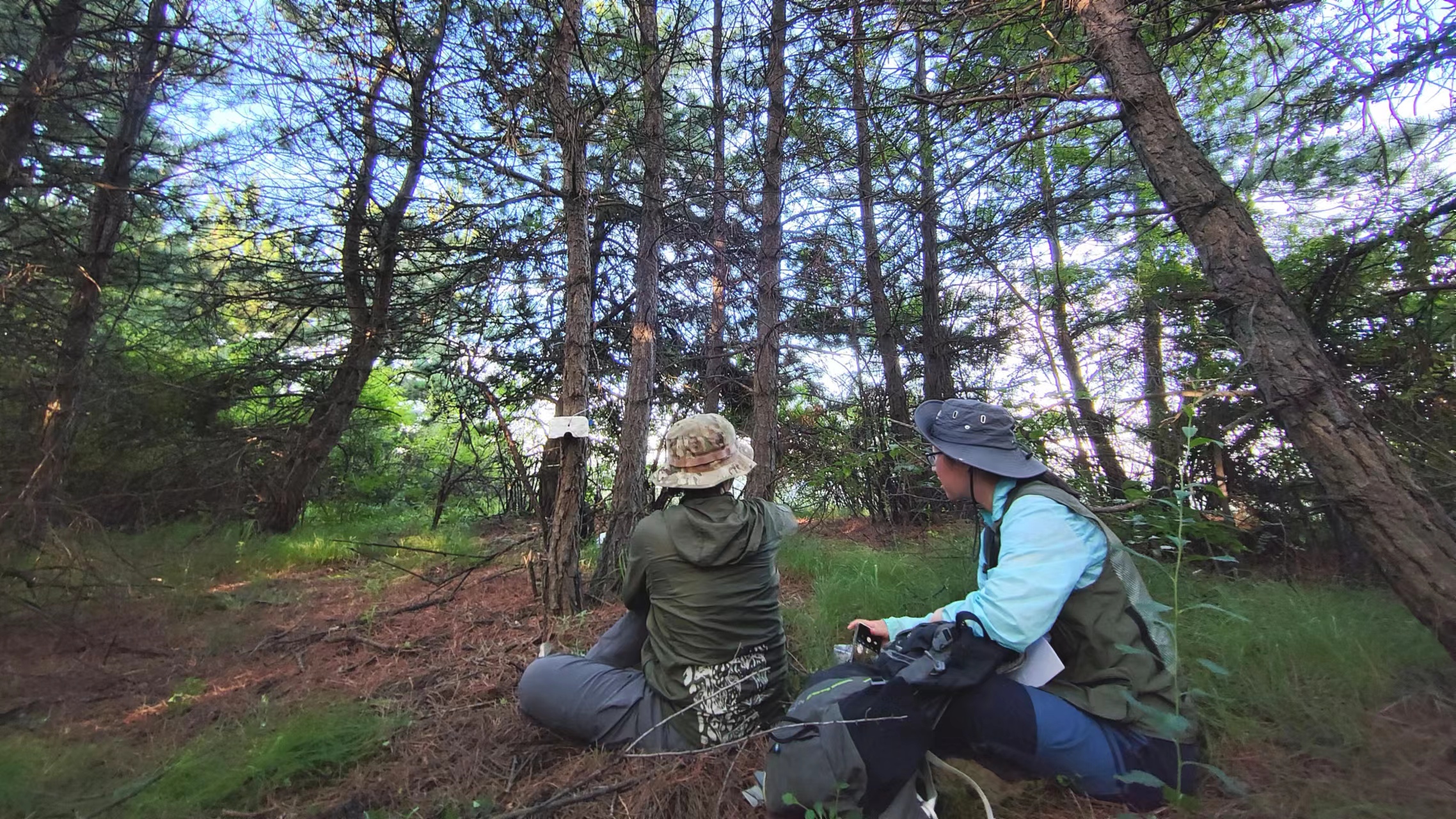
Huang Qiaowen (L) and Zhao Ying, CFCA members, install an infrared camera in Heshun County, Shanxi Province, China, July 2022. /CFCA
Huang Qiaowen (L) and Zhao Ying, CFCA members, install an infrared camera in Heshun County, Shanxi Province, China, July 2022. /CFCA
Joint efforts
Speaking of the reason of choosing Heshun as the base to protect North China leopard, Song mentioned its rich forest resources and Wang Buping, a local policeman who initiated the mission of finding big cats in northern China in 1998.
Ten years later, Song volunteered to join Wang's mission which has become the longest-running programs of North China leopard protection in China.
So far, Song's team has designated 300 monitoring sites across nearly 2,000 square kilometers of land in Shanxi. One of their major tasks is to observe wildlife through infrared cameras.
"Most of them are installed at the level of leopards' shoulders, about 30 to 50 centimeters above ground, so that we can get clear pictures of their spot patterns which are used to identify individual leopards," said Song.
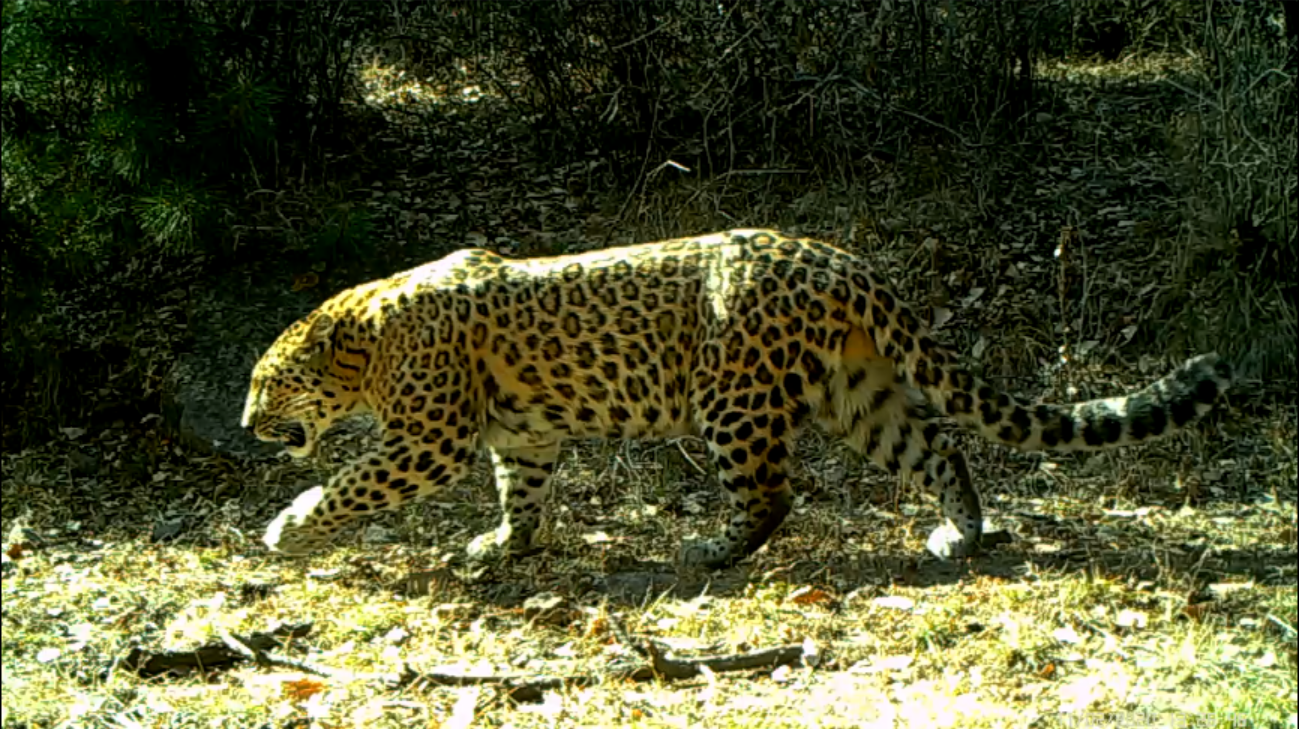
M13, the 13th male leopard identified by the CFCA, in a forest in Heshun County, Shanxi Province, China, January 9, 2021. /CFCA
M13, the 13th male leopard identified by the CFCA, in a forest in Heshun County, Shanxi Province, China, January 9, 2021. /CFCA
Through these "eyes," they have witnessed how a male leopard (M2) ruled his territory for at least 12 years, and how a cub (M13) grew up and established a new dynasty occupying about 200 square kilometers, the largest territory in CFCA's monitoring area. The size of a male leopard's territory is usually 50 to 100 square kilometers.
Seeing a leopard with their own eyes is a very rare thing. Over the years, only four or five members of their team have seen a leopard in the wild.
"Generally speaking, leopards are afraid of human and will not take the initiative to attack people," Song said.
As wildlife species recover in recent years, leopards hunt local villagers' cattle and sheep. Wild boars, prey of leopards, also destroy their crops. In order to increase locals' tolerance to damages caused by wildlife, Song's team has been providing ecological compensation since 2015 from their own pocket.
"We need to accept that losses caused by wild animals are inevitable as long as we want to coexist with them while they thrive," said Song.
Their method of evaluating and compensating locals' damages was adopted by the local government in Heshun and the county began to allocate a special fund for leopards eating livestock in its annual fiscal budget in 2016.
Moreover, Heshun has become one of Shanxi's eight counties to carry out the pilot program of wildlife damage compensation insurance in 2021, under the guidance of China's push to protect biodiversity.
In Shanxi's latest plan for wildlife protection released in February, North China leopard has been designated as an umbrella species to restore wildlife habitats. An umbrella species is one whose conservation confers protection to other species that occur along with it.
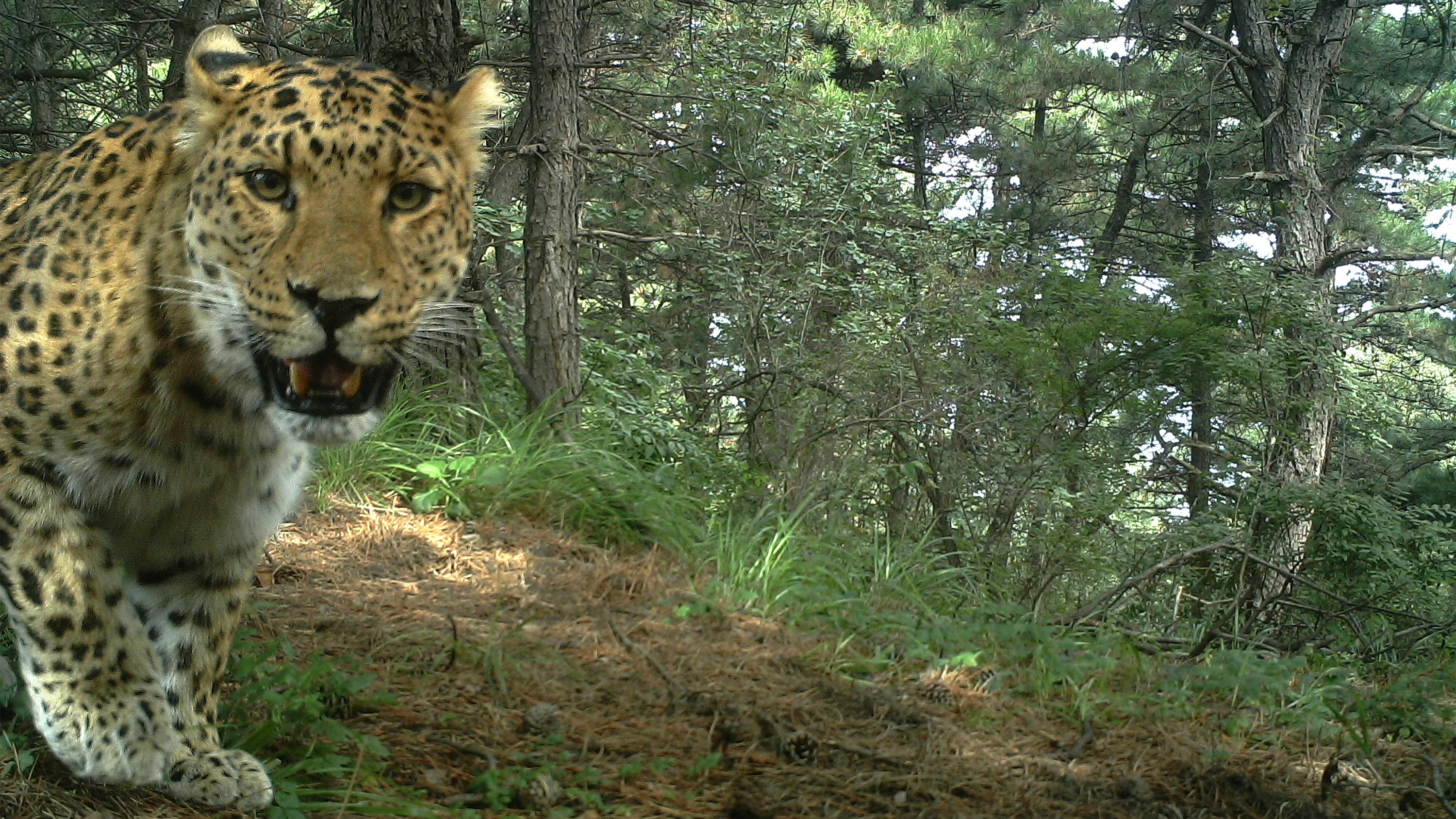
M2, the second male leopard identified by CFCA, is curious about an infrared camera installed in Heshun County, Shanxi Province, China, August 2014. /CFCA
M2, the second male leopard identified by CFCA, is curious about an infrared camera installed in Heshun County, Shanxi Province, China, August 2014. /CFCA
Song said wildlife protection needs joint efforts from multiple perspectives, including governments, public welfare organizations, universities, and the private sector. The support from local communities is key as they are closest neighbors of wild animals.
"Right now, more than 20 local villagers in Heshun are helping us in patrol, camera maintenance, data collection and publicity," said Song.
With only 14 full-time team members, CFCA focuses on doing research on leopards' population and habitats, reducing people's fear or hostility towards this species, and helping governments improve their development plans.
For example, they would suggest the government build passageways under a highway so that wild animals can pass under it, or avoid building a road through their habitats.
"Animals have been learning how to live with humans as well," said Song. "When we put nature at the top of our agenda, we will evaluate the impact of all our activities on wildlife and find out what can be done to minimize the impact."